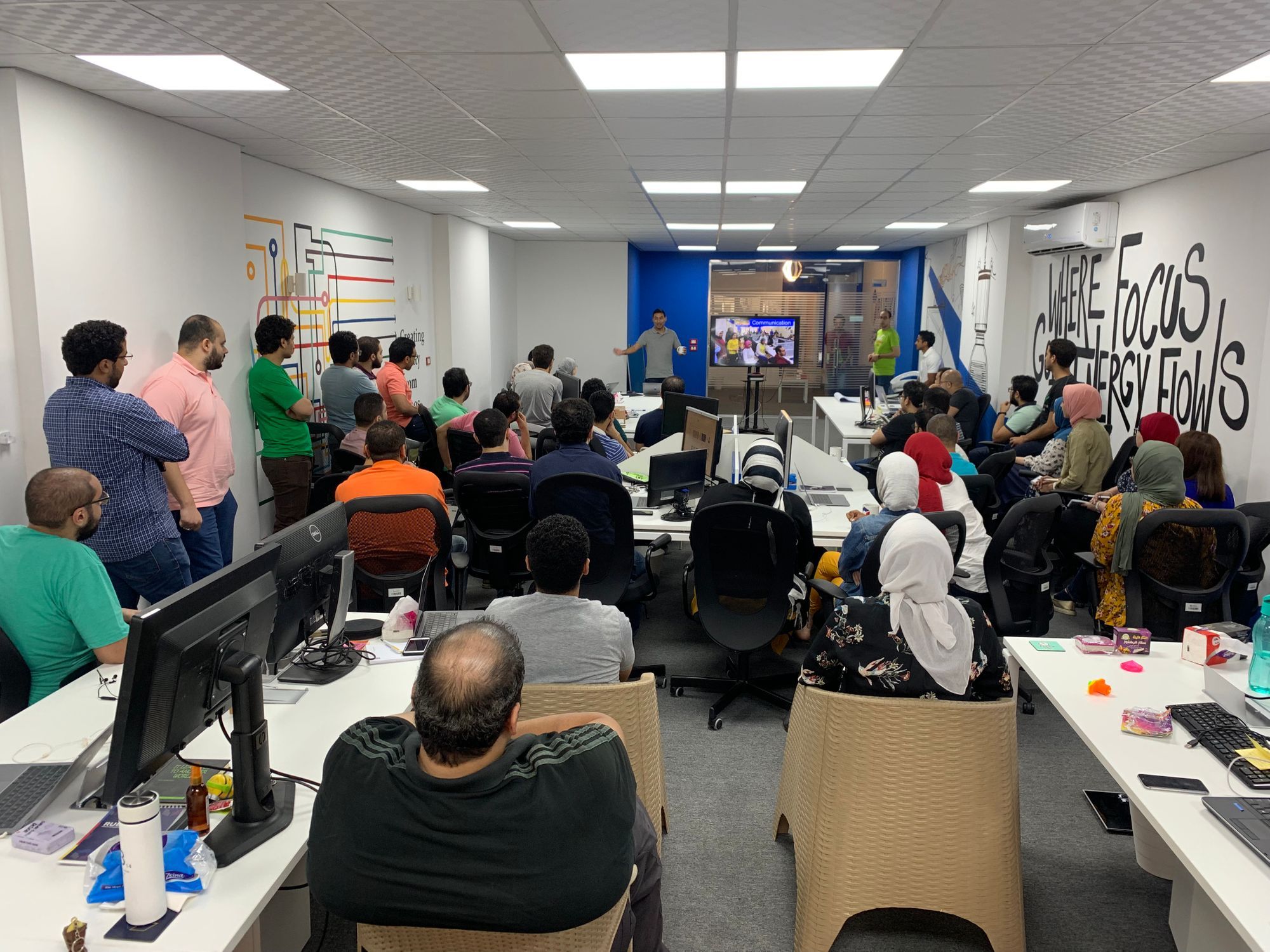Two-thirds of employers ranked Communication as a top soft-skill they’re seeking in employees. As for Product Managers, Communication ranked the most important skill, absolutely essential, for the role.
It’s all well and good for a software engineer to be proficient in all the needed programming languages and unbelievably knowledgeable in software development best practices, but whether he can communicate that knowledge, can get his points across, can collaborate with others effectively and efficiently is key. Here at Rubikal we believe communication is absolutely essential, whether for engineers, product or management. We’re not robots typing away on our Macbooks, we’re an awesome team of engineers (and product managers) working together to make a difference in people’s lives and in order to work together we need (and love) to communicate.
The good news is communication skills can be acquired and significantly improved. Here are 4 easy adjustments you can make that would have a significant impact.
1. Don’t just hear, listen
“Most people do not listen with the intent to understand; they listen with the intent to reply.” (Steven R. Covey).
Whether you’re a Product Manager eliciting requirements for your latest application or a Software Engineer trying to explain why your solution is better, in order to communicate effectively you need to truly understand what the person you’re communicating with is saying. You also need to make them feel heard and understood. You always need to pay attention to what a person is saying, process it, let it simmer a while and then if necessary respond. Don’t tune people out, nod your head and think about what you’ll need to do after this conversation is over. Truly be there, be attentive, actively listen to what they're saying and think it through. Try to stop the urge of thinking about your response and how your out-of-the-box solution will completely blow their minds away while the person is talking to you. A great software product manager once said “Good communication involves more listening than talking. Listen to what your team and customers are saying.”
Again, focus and show that you’re paying attention. A good way to show that you’re actually listening is to practice active-listening. You can practice non-verbal active-listening by keeping eye contact, smiling reassuringly every once in a while and even using your posture to convey that you’re being attentive. Verbal active-listening could be by using positive reinforcement sparingly like saying “indeed” or “I understand” to reinforce that you’re actually listening. I’m not saying you have to agree with whatever’s being said, what I mean is just respond appropriately and show comprehension. Another good idea would be to reflect on what the person is saying and summarize it by paraphrasing and quickly listing the key points of their discussion. This also helps you remember what has been discussed later. Again, don’t just hear, truly listen and understand.
2. Start with a compelling message

A human’s attention span is now down to 8 seconds, lower than a goldfish, for your info. We are in a quick-paced era where people just don’t have time. We’re all running through our lives getting things done, or trying to anyway. And if someone wants to interrupt that transrapid train we’re constantly on, they would have to powerfully compel us to. They would have to pull our interest instead of pushing their information at us.
A good way to capture a person’s attention, to pull their interest, in the first few minutes of a conversation is to start with a compelling message summarizing your point. A great example of that would be to follow Simon Sinek’s advice in his popular TedX talk about “starting with why”. He says that the best organizations out there, start with why they’re building their product and they inspire others by it. That once people are inspired, once they believe what the organization believes, they trust the organization to build anything, that “People don’t buy what you do, they buy why you do it”.
So, start your message with why you want what you want, why you want to build that product, prioritize that feature or why your technical solution would work best...etc. Once we know why and believe what you believe, we’d be more susceptible to how you’re going to do it and what needs to be done.
3. Be Complete and Concise
I once had this brilliant, but incredibly busy manager, which by default made him impatient and with a very low tolerance for wasting time. He always urged us to make our messages both complete and concise. So, once you have people’s attention and thus time, a good thing would be to complete your message by covering the details of the situation and the solution. State what’s happening, why it’s happening, all the details that the person would need to know and then the steps that need to be taken, their impact or what you need at this point.
In order to optimally convey your message, you need to know your audience and reflect that on the way you present information to them. The way people absorb and process information is completely different. For example, some people prefer visuals, so you’ll need graphics, graphs and pictures to show them so that they would understand your message better. Others are auditory and process information better when it’s spoken, while on the other hand some prefer receiving written words and reading through them. Try to tailor what you're saying and how you’re saying it to who you’re saying it to and in a way they would relate to and understand best.
A good practice for concise messages is to “tighten” your sentences. Start by listing what you’re trying to say and work on it bit by bit. Remove any excess information, but more importantly focus on important information and keep those, try as much as possible to not repeat yourself and get to the point without any extra “stuffing” or “padding”. And in the end, this is not an exact science, just go with what feels right.
4. Stick to the agenda
A significant part of our work life is spent in meetings. Standups, Kickoffs and Retrospectives are just to name a few. First of all, make sure you really, really need that meeting before scheduling it. Should it have been an email? Meetings are both essential and can easily be time consuming when they stray off topic. They can easily run for days and still not achieve their objective, true story. So, for all meetings create a clear meeting agenda, send it to the attendees ahead of time and always always stick to it. It’s perfectly okay to say “let’s schedule a meeting to discuss this later”, even if you’re invited to the meeting and not running it, say it just the same. Time is a valuable resource and we have to be mindful of how we spend it.

